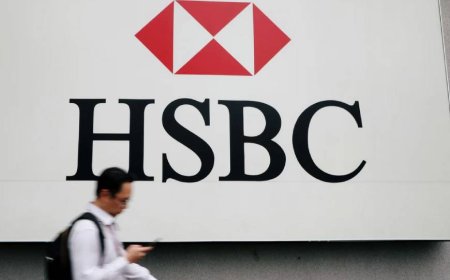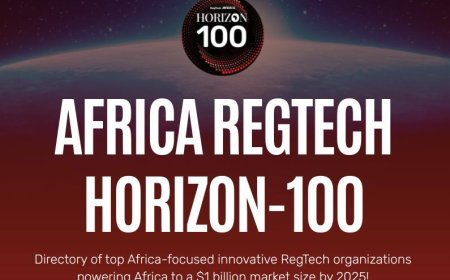Neobanks are taking over the UK
The UK is a leader in neobanking apps. Banks like Monzo, Starling and - more so - Revolut, are some of the most successful startups in this space, globally. Such neobanks hold bank licenses and offer a whole array of services, unlike some Fintech which are designated for a specific usage, these banks enable customers to hold, save, and borrow funds. As fully regulated banks, customers who use them are eligible for protection by the UK’s Financial Services Compensation Scheme (FSCS), up to £85,000 per account.

The UK is a leader in neobanking apps. Banks like Monzo, Starling and - more so - Revolut, are some of the most successful startups in this space, globally. Such neobanks hold bank licenses and offer a whole array of services, unlike some Fintech which are designated for a specific usage, these banks enable customers to hold, save, and borrow funds. As fully regulated banks, customers who use them are eligible for protection by the UK’s Financial Services Compensation Scheme (FSCS), up to £85,000 per account.
As many as 40% of all Brits have a neobank account, but only half of those who have them use them as their main account. Surveys indicate 83% of Britons perceive challenger banks as less trustworthy than established banks, showing a significant trust gap - but this is particularly true for older individuals. People under 40 would normally see online neobanks as “equals” and hence the future looks bright for such neobanks in terms of market share.
These are the leading neobanks in the UK currently:
|
Neobank |
Customers (UK) |
Latest Annual Revenue |
Profit/Loss |
Latest Valuation |
|
Monzo |
12.2 million |
£1.2 billion (FY 2025) |
+£60.5 m pre-tax (FY 2025) |
£4.5 billion (Oct 2024) |
|
Starling Bank |
4+ million |
£714 million (FY 2024) |
+£223 m pre-tax (FY 2024) |
~£3 billion (2022) |
|
Revolut (global) |
~10 million UK (50m worldwide) |
£3.1 billion (2024) |
+£1.1 billion pre-tax (2024) |
$33 billion (2021) |
* Starling is known to be one of the best business bank accounts so average account size is slightly larger than Revolut and Monzo.
There are a few additional UK neobanks which are slowly gaining traction. Atom Bank (launched 2016) operates via app only and focuses on mortgages and savings; Kroo, a young digital bank (launched 2022), markets itself as a “socially conscious” bank, and plants trees on behalf of its customers. Tandem Bank (founded 2013) pivoted to “green” lending and savings products, aiming to finance eco-friendly home improvements.
Financial Performance and Funding
When it comes to investors, UK neobanks have pulled in a lot of venture capital to help them grow. Banks require both a lot of working capital alongside growth-fuelling investments.
However, the funding frenzy we saw in 2021 for fintech companies has slowed down a bit. Monzo and Revolut are really leading the pack in Europe, each having raised over £1 billion so far. Monzo's most recent funding round in 2024 put its value at a hefty £4.5 billion. Revolut's last big funding round in 2021 saw it valued at an astounding $33 billion – a UK record at the time of this funding round.
Starling has brought in around £800 million over the years. Its last major funding round in 2022 valued it at roughly £2.5-3 billion. Since then, Starling has actually grown its balance sheet using its own profits.
Zopa, a business banking app, has raised over £500 million as it transitioned into banking. This includes £80 million in late 2024 and £75 million in 2023.
Tide, another business banking app, has raised about $300 million, including $120 million in 2025, to reach unicorn status. These neobanks have attracted some serious investors.
These include global venture capital firms and strategic partners. For Revolut, you'll find names like SoftBank, Tiger Global, and DST. Monzo has attracted General Catalyst, Accel, and Y Combinator. Goldman Sachs and Fidelity are among Starling's key investors. Silverstripe and Augmentum back Zopa. Finally, TPG and Apax are significant investors in Tide.
Revenue and profitability: A recent development in 2025 is that the leading UK neobanks have moved into profitability, aided by rising interest rates and maturity of business.
Starling Bank in particular has been extremely profitable - in 2024 it reported £223 m pre-tax profit on £714 m revenue. Starling’s profits come largely from interest income on mortgages, personal and business loans (its loan book grew 53% in 2023) and its relatively low cost-to-income ratio.
Monzo turned its first full-year profit in the year to March 2024, posting £15.4 m pre-tax, and then saw profit surge to £60.5 m in the year to March 2025 as revenues hit £1.2B.
Revolut, with its diversified model and global user base, achieved profitability a year earlier. After a small loss in 2022 (due to a crypto trading downturn), Revolut’s 2023 accounts showed £1.7B revenue and a return to profit (£40m net in 2021, swinging to a £25m loss in 2022, then back to large profit in 2023). More so, Revolut’s 2024 revenue exceeded £3B with over £1B profit and that was before it has achieved its full banking license.
Globally, Revolut and Nubank stand out as the two largest neobanks by valuation and user count in 2025, both valued at above the $30bn mark.
Each has taken a different approach (Revolut a multi-product global play, Nubank a focused credit-driven regional play), but both are equally as successful.
Selected Global Neobanks (2025): UK vs international peers
|
Neobank |
Primary Market |
Customers |
Profitability |
Recent Valuation |
|
Monzo |
UK |
12.2 million |
Yes – first annual profit 2023 (£60m pre-tax FY2025) |
£4.5 b (2024) |
|
Starling |
UK |
4+ million |
Yes – profitable since 2021 (£223m pre-tax FY2024) |
~£3 b (2022) |
|
Revolut |
UK (global ops) |
~50 million (10m UK) |
Yes – profitable since 2021 (est. £1.1b pre-tax 2024) |
$33 b (2021) |
|
N26 |
Germany/EU |
~8 million |
No – still loss-making (loss €172m in 2021) |
~$3 b (2023, down from $9b) |
|
Chime |
USA |
~10–15 million |
Breakeven – small profit achieved 2024 |
$11.2 b (2025 IPO) (down from $25b) |
|
Nubank |
Brazil & LatAm |
80+ million |
Yes – highly profitable ($557m quarterly) |
~$30 b (2025 market cap) |
Regulatory and Compliance Developments in 2025
The UK's 2025 neobank regulations encourage innovation but with closer oversight. Many neobanks, like Revolut, now have full banking licenses. Regulators are pressing for strong fraud controls and customer protection, with new rules like the Consumer Duty. Open Banking continues to expand, fostering more integrated financial services. Finally, regulators are pushing for sustainable profitability and operational resilience from these maturing institutions.








































































































































